Regular readers will recall that MB uses a “five drivers” model of Australian dollar valuation. They are:
- interest rate differentials;
- global and Australian growth (more recently this has become more nuanced for the Aussie to be more about Chinese growth);
- investor sentiment and technicals; and
- the US dollar
For the first,my view remains that there is still very little chance of local interest rate hikes with falling terms of trade, the capex cliff and a soft labour market likely outweighing the bloom in activity in cyclical sectors. Interest rate markets are now pricing 10bps of hikes in the next twelve months but have been stuck in a +/- 10 bps range around zero since October.
On the other hand, the rise in US bond yields that many expected this year has so far been cut short by a run of terrible economic data. Weather has largely been blamed and is responsible in some (possibly large) measure. That has meant that the carry spread between Australia and US ten year bond has risen a little but remains in its recent range:
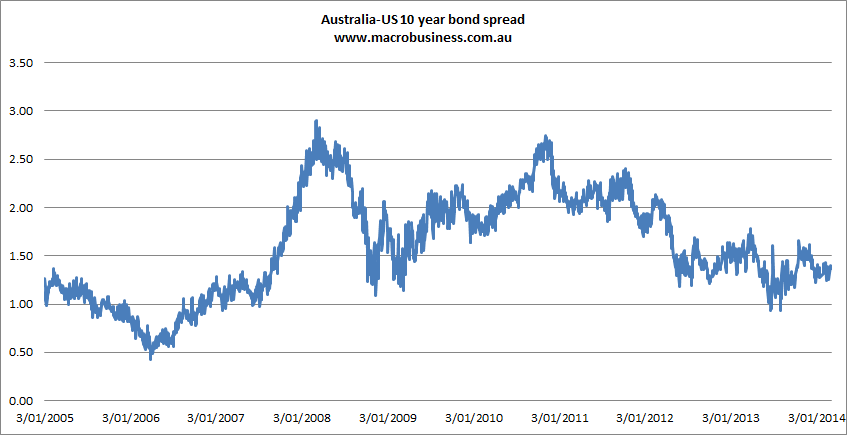
The progress of taper at this point is anybody’s guess but assuming the weather is mostly to blame, the economy will snap back quickly, and taper will continue.
On driver two – global, local and Chinese growth – we face something of a dichotomy. Global growth may accelerate this year but Chinese growth is going to slow over the next six months to 7% and go lower if the rebalancing process is allowed to run its course. Yesterday’s pledge to keep growth at “about 7.5%” also came with a commitment to reduce the fixed-asset investment share to 17.5% and maintain M2 growth rates at 13%, which is slightly below the current level already causing the growth squeeze. That equals a pretty sharp deceleration, in building and commodity demand, forecast in yellow:
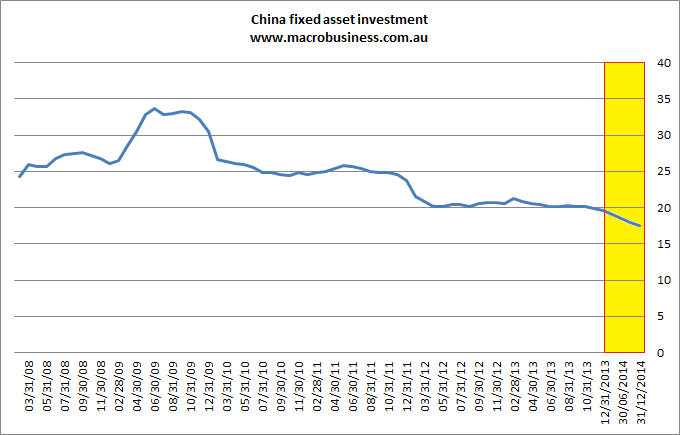
There was also a strong commitment to ending pollution which is generated out of the old industrial economy.
It’s not clear how the CCP intends to maintain headline growth with the other growth goals in mind. The safest assumption, I think, is that the Chinese will continue to squeeze the fixed-asset economy until it has an event of some kind and then stimulate. On balance, then, this remains negative for the Australian dollar.
Australian growth will follow suit. All things being equal, I expect another year of sub-par growth under 3% as the capex cliff, falling terms of trade and national income outweigh the cyclical forces of monetary and fiscal stimulus. On the other hand, the US and global economies aught to chug along closer to 3% this year, the same as Australia. The gap I expected between Australia and global growth this year one month ago has narrowed so that’s a slight positive for the currency.
Drivers three and four are also less weak than one month ago. Daily technicals show a possible inverted head and shoulders pattern forming and any break above 91 cents will unleash upside:
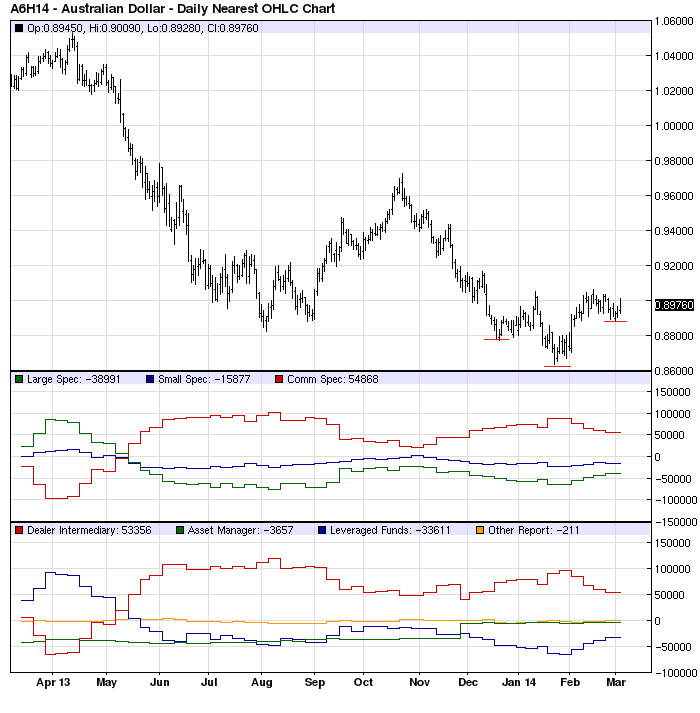
Turning to sentiment, the Commitment of Traders report (at bottom) is showing that the large and small speculators that control the market are less short than earlier in the year. This could be either bullish or bearish but I’d take the former for now. In my previous assessment I expected the RBA maintain a regime of jawboning for the currency and housing. Bizarrely, the opposite has happened, which is a clear positive for the currency.
There is one possible positive for sentiment. We know that central banks have been adding Aussie to there reserve portfolios for a few years. That has been a significant real support to higher valuations and general market sentiment around the currency. The IMF’s Currency Composition of Official Foreign Exchange Reserves (COFER) report shows the accumulation was still aggressive in early 2013:
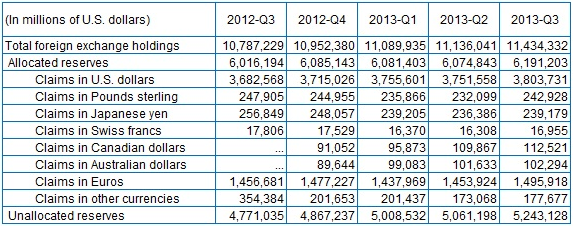
However, it is interesting to note that as the Aussie has regained its cyclical mojo and gotten cheaper, official buying has slowed to a trickle. That does not strike me as especially committed to the cause. Buying in the twin currency in Canada has remain much stronger. That’s not to say we’ll see a reversal in the holdings. But we aren’t seeing much in the way of bargain hunting either. This has not been updated since December.
The final driver, the valuation of the US dollar, is looking weak but not overly bearish. Here’s the yearly chart:
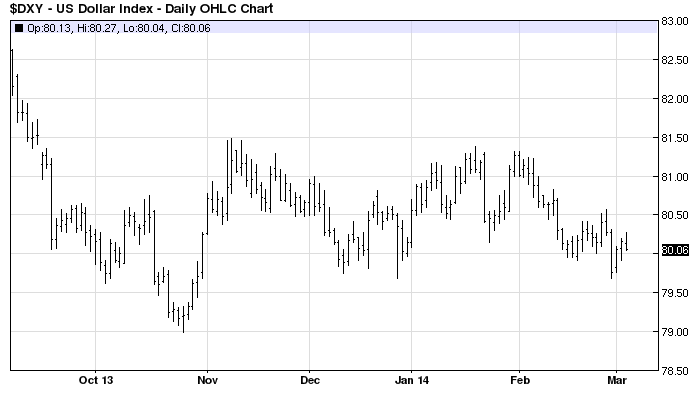
There’s been little response in the dollar to Crimea or the weak winter data. I’m not sure I see any great upwards or downwards momentum for the US dollar this year but it should at least remain steady as growth and tapering grind on, the Budget deficit narrows further and equities remain buoyant.
The upshot is that the conditions of Australian dollar weakness of one month ago have shifted moderately towards neutral with a risk of short term strength. My long term view remains unchanged – downside first to 80 cents and then much lower – given I see no real recovery in Australia until its below 80 cents permanently.

